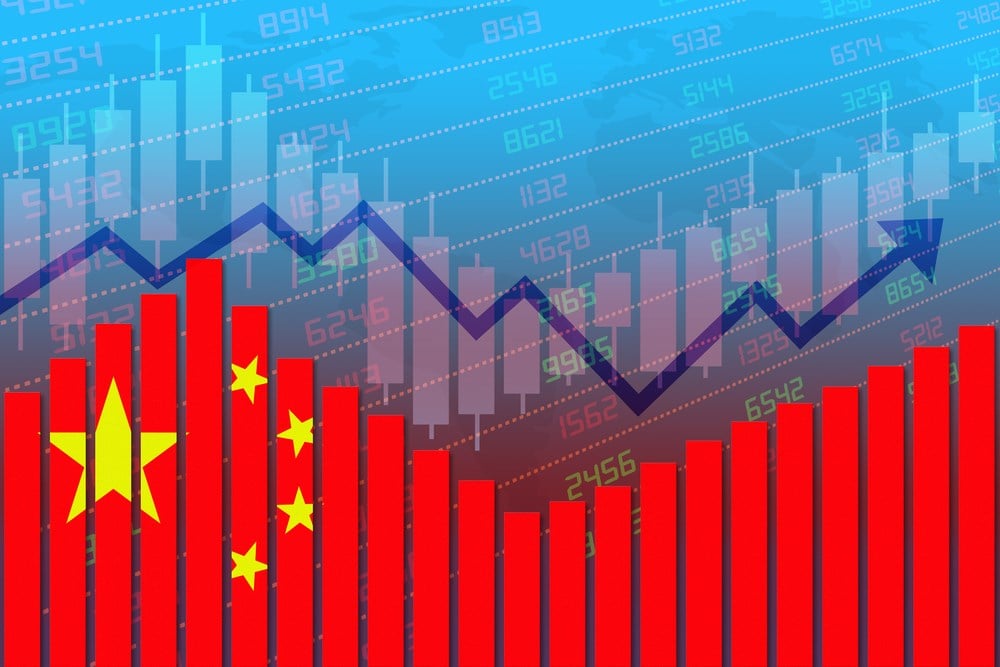
The world of investing is focusing all of its focus - and resources - on the sphere of U.S. and European equities, with good reason, as volatility is the 'fish of the day' in these markets. However, significant trends are developing on the other side of the spectrum; China's economy has struggled to find traction to fulfill its 'reopening' bull run hopes.
Markets just received positive news from one of the most reliable economic indicators, one that traders follow closely to spot upcoming trends and generate trade ideas.
China's Caixin manufacturing PMI has slowed from 50.9% to 50.5% during the past month. While most market participants could have justified equity declines on the back of a lower reading, the opposite is true today. Stocks like iShares MSCI China ETF (NASDAQ: MCHI), Alibaba Group (NYSE: BABA), and JD.com (NASDAQ: JD) are reacting with decent advances during Monday's morning session, despite it being a shortened day in observance of the fourth of July holiday.
With all three of these names trading well into bearish territory, an average rally of 2.7% between these firms can begin to mark a bottom in sentiment. Further catalysts, such as government pressure for more stimulus packages and U.S. treasury secretary Janet Yellen visiting the nation for official talks, can serve as a vote of confidence for investors to consider some exposure.
Gaining Traction
While economist consensus for the Caixin PMI fell within the 50.2% mark, a slight beat to 50.5% - however insignificant it may seem - speaks volumes of what is happening inside Asia's largest economy. For reference, when it comes to PMI indices, any reading above 50.0% signifies underlying economic expansion; the opposite applies to any reading below 50.0%.
Perspective in these trends is even more critical, as the index has been on a slow and steady rise since January of 2022, creating a widening gap between the real economy and equity values.
While business activity has gone from contraction in 2022 to a stabilizing path of expansion so far into 2023, the iShares MSCI China ETF has failed to reflect these pivots. The stock market is typically a leading indicator of the underlying economy. Therefore a flattish ETF can create some value opportunities.
Alibaba and JD.com are trading, similar to the overall ETF, at a more than 50% discount from their all-time high prices. A 'Bear Market' is a 20% retracement from all-time high prices. When prices lower past these marks, the 'Bear Market' mark is one of the most significant to determine future direction and momentum.
Following these levels, investors can assume a more than 25% underlying potential upside, as traders will look to push prices back to the bearish marks and consolidate. Furthermore, analyst ratings for both Alibaba and JD.com also point to attractive potential ceilings. With a 60% to 70% average upside price target, these two consumer cyclical stocks are well positioned to ride the upcoming 'awakening' in the Chinese consumer, especially as government stimulus measures trickle down into the everyday buyer.
The Next Move
Given that the Chinese economy, as stable as it may seem today, is falling severely behind the benchmarks set by peers across the globe. By sporting lackluster inflation rates stemming from weak demand and business activity, Chinese officials face increasing pressure to make a significant move before it's too late.
Every month that economic data disappoints is a month that brings investors closer to a major catalyst, which may come as an announcement from the government in the form of further policy pivots.
The Chinese consumer today carries the highest savings rate globally, with a 45% reading; the government needs to step in and create more confidence and accommodative environments to kickstart spending. All of these trends, taken as a whole, are creating a significant tailwind for Chinese equities, namely consumer cyclical ones like Alibaba and JD.com.
On a relative basis, both Alibaba and JD.com stocks are trading well below the valuations of their American counterparts. Amazon.com (NASDAQ: AMZN) and eBay (NASDAQ: EBAY) trade at a respective 315.0x and 37.4x price-to-earnings ratio, a massive gap from a 21.0x average multiple between Alibaba and JD.com.
With limited downside risk due to the exorbitant discounts present across these stocks, investors can line the odds significantly in their favor by considering some possible exposure in the region. The bottom line remains the same; markets need more expansionary economic data and government policy support. Otherwise, the long-awaited 'reopening play' will be postponed again.

